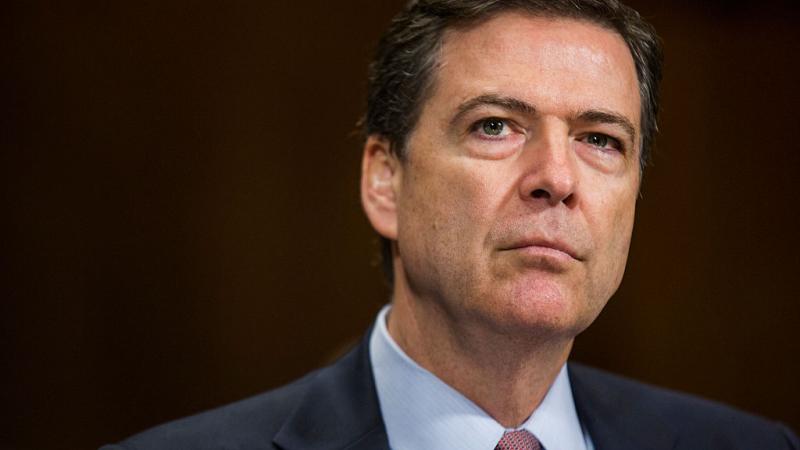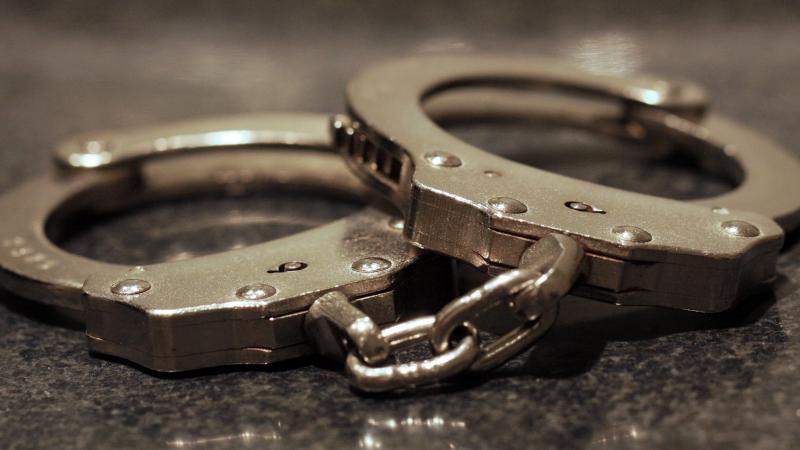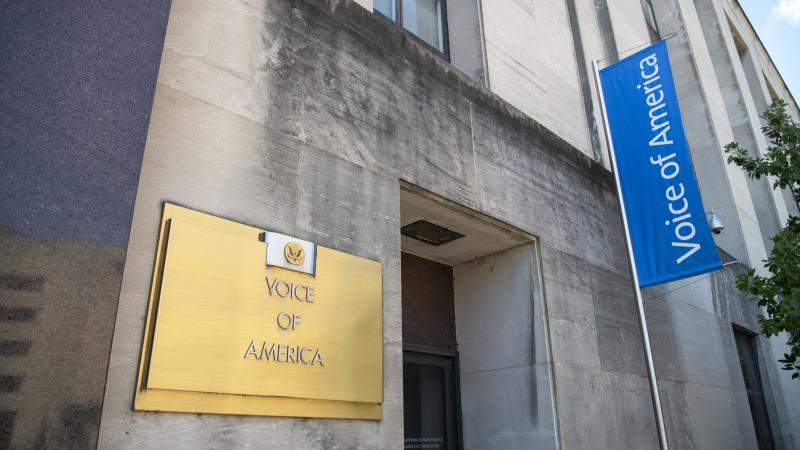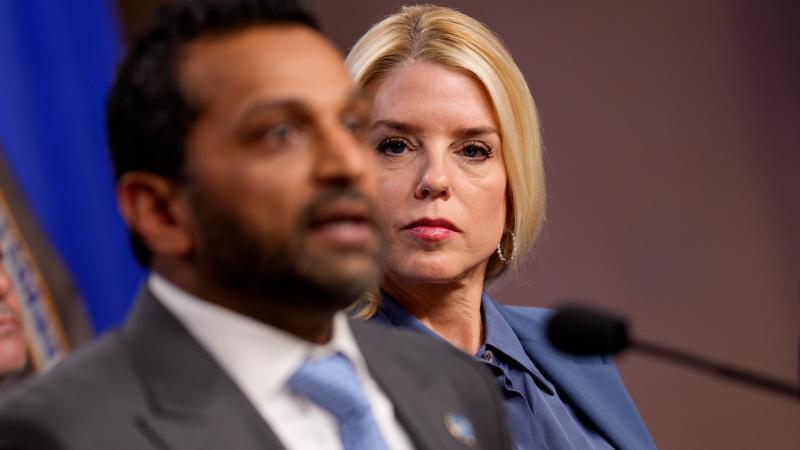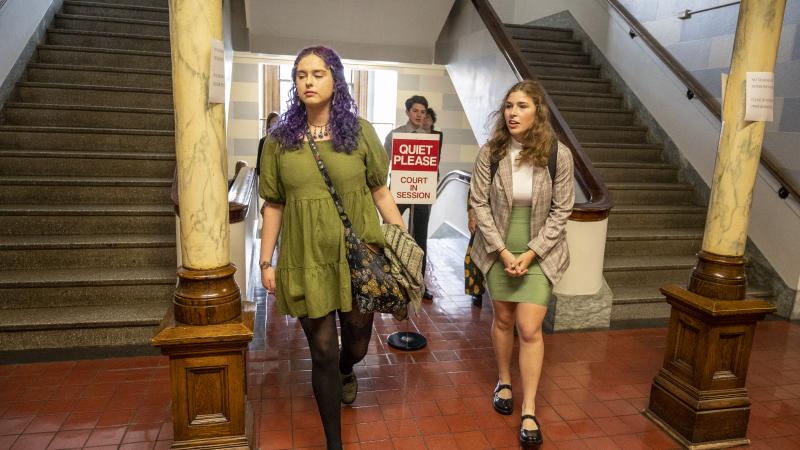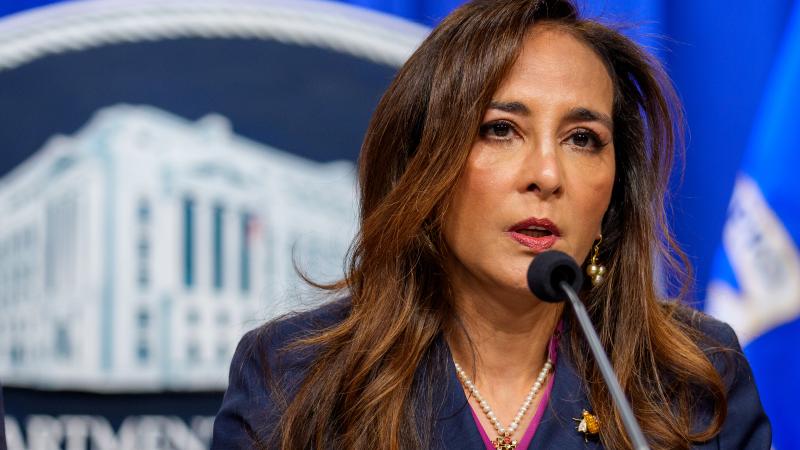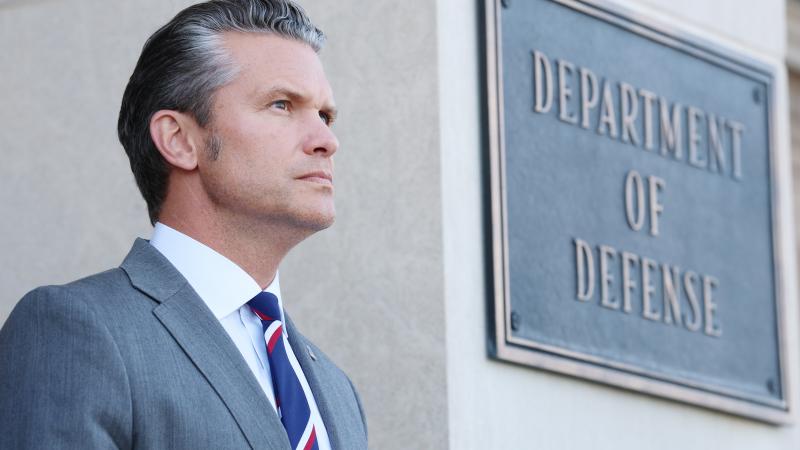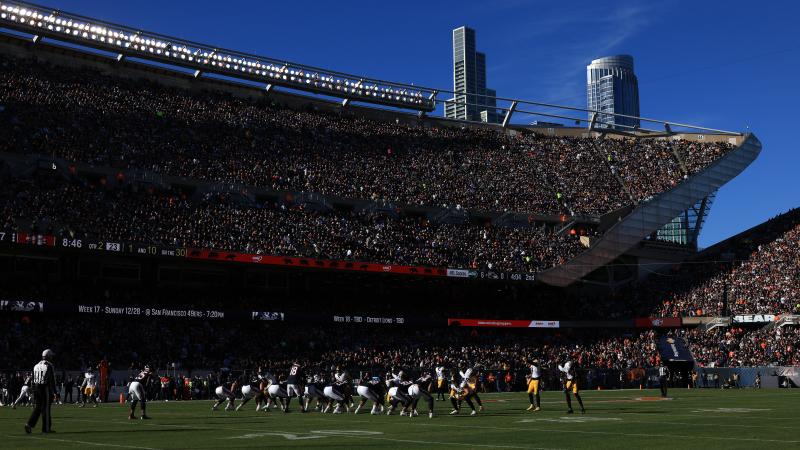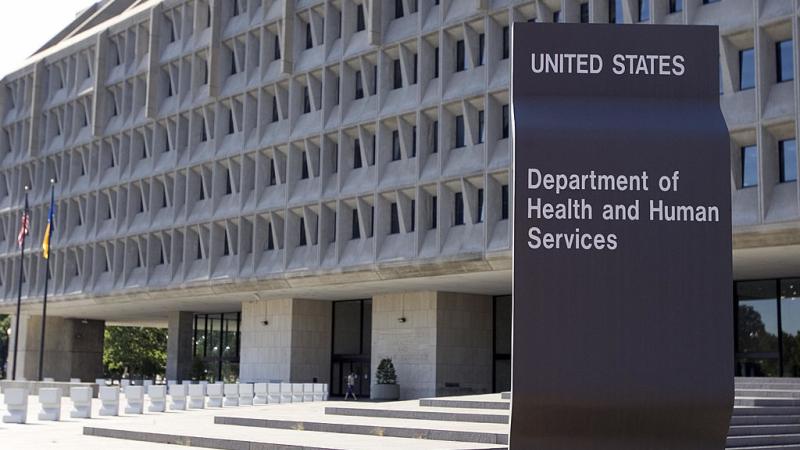Appeals judges ignore women's safety issue in long hearing on Trump ban on males in women's prison
D.C. Circuit rejects intervention by female inmate Rhonda Fleming, whose lawsuit against earlier transgender policy went to trial, while fishing for any way to get out of direct ruling on lower court's injunctions.
President Trump's executive order prohibiting male inmates in federal women's prisons is premised on protecting the dignity and safety of incarcerated females, Justice Department senior counsel Benjamin Hayes told the U.S. Court of Appeals for the D.C. Circuit, which is reviewing lower-court injunctions against the EO in three lawsuits.
But the three-judge panel spent less than a minute considering the plight of women in an hour-plus hearing Friday, more than twice its allotted time, that explored every possible technicality and procedural maneuver that could let the D.C. Circuit punt the Eighth Amendment and Administrative Procedure Act cases back to trial court for evidentiary hearings.
Nineteen male inmates who have undergone "extensive medical treatment" to present as women seek to stay in their current women's prisons, where they were originally assigned or transferred based on "individualized assessments" by the Bureau of Prisons "for their safety and security," claiming no accommodations in men's prisons would protect them.
Two Democratic and one Republican nominees repeatedly questioned Hayes and plaintiffs' counsel Jennifer Levi of GLAD Law on what exactly they were arguing and how developed the record was, suggesting wariness of an up-or-down ruling on U.S. District Judge Royce Lamberth's preliminary injunctions.
"I don't think we have jurisdiction in this case" because Lamberth kept issuing new injunctions while admitting "nothing had changed … and that seems to be in total defiance" of the Prison Litigation Reform Act and its 90-day "shall expire" language, President George H.W. Bush-appointed Judge Raymond Randolph said, noting an 11th Circuit PLRA ruling.
President Obama-appointed Judge Sri Srinivasan, considered a likely Supreme Court pick but for President Biden's limitation of an open slot to black women, later asked Levi about the legal propriety of Lamberth's extensions, and his fellow Obama appointee Judge Nina Pillard asked DOJ's Hayes for supplemental briefing on the propriety.
Only Judge Randolph even broached the possibility that female inmates might be threatened by male inmates, noting the court denied a motion for intervention by female inmate Rhonda Fleming, the first lawsuit cleared for trial against the previous BOP transgender placement policy. Levi told Randolph that DOJ didn't offer evidence of harm to females.
The gender-critical Women's Liberation Front, which is representing California female inmates challenging its transgender placement law (SB 132), sought permission to file a friend-of-the-court brief Thursday, past the deadline.
WoLF could not identify "the final location where the cases were consolidated" because the court approved plaintiffs' pseudonyms and hid their prisons, which "prevents us from advancing the complaints of the women" in the case, it told the court. The group belatedly learned details from a female inmate who shares a unit with a plaintiff and rushed to file.
WoLF Secretary Elspeth Cypher, a former Supreme Judicial Court of Massachusetts justice, told Just the News the D.C. Circuit hasn't ruled whether to accept its brief and that Fleming just found counsel for her trial, "so that will be proceeding at some point."
On a Zoom meeting after the hearing, WoLF Legal Director Lauren Bone said she was surprised by the jurisdiction question, which neither side had raised. She said she was disappointed that the judges were "doing a lot to guide the plaintiffs' case" and ignoring the effect on women, though Cypher noted that at least Raymond used "male" and "female" correctly.
Immediate transfer violates language of Trump's order?
WoLF's brief says most trans-identified males "choose to remain" in men's prisons, where "sexual assault rates are often lower" than in women's prisons. Most are incarcerated for "sex offenses … and a disproportionate number are classified as high-security risks," showing that female inmates face a greater risk from them than do males in men's prisons.
Both sides acknowledged at Friday's hearing that 1,400 male inmates who identify as women are not suing to block the EO but disagreed whose argument it supported.
Judge Pillard doubted the court was prohibited from reviewing BOP's inmate placement decisions, as Hayes claims, because Trump's EO replaces BOP's discretion with "categorical transfers of all transgender women without regard to their individual characteristics." (She repeatedly called the males "transgender women" or just "women.")
If plaintiffs claim there's "nothing that could be done in a male facility that would alleviate the constitutional injury," then the administrative remedies that Hayes says they must exhaust would be a "dead end" and they could bring substantive claims in court, Srinivasan said.
Judge Randolph said immediately transferring males to women's prison might actually violate Trump's EO, which requires it to be "implemented consistent with applicable law" – in this case, the Prison Rape Elimination Act safety review. The record suggests no individualized review, just "come with me, we're transferring you," he said.
Hayes said each prison has "exceptional discretion" to move aggressors away from known and potential victims, including the low-security men's prisons where the trans-identified males would be transferred. "Maybe that doesn't bring [the threat] down to zero" but it's still relief for the plaintiffs, which is all the government must give, he said.
The question from the record is whether the men's prisons are "consistently unwilling to do those things," Pillard responded, noting that two plaintiffs said BOP knew they had been assaulted in men's prisons yet sent them back, where they were assaulted again.
BOP regulations include an emergency grievance procedure directly to the warden with a three-day response window for "imminent risk to bodily harm," Hayes said.
'Female features' but only six of 19 can pass as women?
Randolph questioned whether the plaintiffs were making a facial challenge to the EO, which could result in all 1,400 trans-identified male inmates being transferred to women's prisons, or just its application to themselves. They are playing it both ways, Hayes said, by falsely claiming their circumstances such as hormone therapy and surgeries are unique.
When Pillard suggested the EO skirted the required administrative procedure by effectively amending PREA regulations without notice and comment, Hayes told her the court would be violating its own precedent by finding an APA violation when Judge Lamberth blocked the EO on constitutional grounds.
Levi, the plaintiffs' lawyer, urged the court to avoid "philosophical debates" and recognize the sexual violence the inmates face if sent to men's prisons, where they will be recognized and victimized as women. "It's already happened to many of them," she said.
Srinivasan questioned what connects the 19 plaintiffs when Levi has expressly said it's not inherently unconstitutional for trans-identified males to be in men's prison. Constitutionally entitling them would seem to be both over-inclusive and under-inclusive, he said, noting Levi emphasized their "female features" while saying six of the 19 easily pass as women.
As long as BOP correctly categorized them as women to start, the plaintiffs will face a unique and different risk from transfer to men's prison, Levi said. "There's a lot of information flow across the prison system" and inmates will know the gender identity of who's arriving.
Srinivasan and Randolph questioned how much individual analysis Judge Lamberth undertook in deciding all plaintiffs could not be constitutionally transferred, especially given his repeated injunction extensions.
"There's a missing link" in Levi's argument, according to Randolph: It doesn't account for new intakes of first-time prisoners, just inmate transfers from women's prisons, when the EO applies to both. If new inmates were placed in women's prison for a single day, "then all your arguments click in," he said, suggesting it's an easy way to circumvent the EO.
In his rebuttal, DOJ's Hayes said the record offers no evidence the plaintiffs were in women's prisons because it was the "only safe place they can be housed." One declaration said they were susceptible to harm from "mere transfer," not any specific factor.
There's a lot in the record showing they can't be safely housed with men, Pillard retorted. "You can quibble with how powerful it is on the merits" but there's "ample evidence they have not been safely housed" in a men's facility.
When Judge Randolph noted the most recent BOP report to Congress about rape and sexual harassment in men's prisons – 0.5% of 1.5 million inmates – Pillard countered that those figures include victimization by staff, making the rate deceptively low. A transgender woman transferred to men's prison "may not have reason to take much comfort," Pillard said.
The Facts Inside Our Reporter's Notebook
Videos
Links
- executive order prohibiting male inmates
- Nineteen male inmates who have undergone
- Judge Royce Lamberth's preliminary injunctions.
- Prison Litigation Reform Act
- 11th Circuit PLRA ruling
- likely Supreme Court pick but for President Biden's limitation
- court denied a motion for intervention
- first lawsuit cleared for trial
- California female inmates challenging
- sought permission to file
- WoLF's brief
